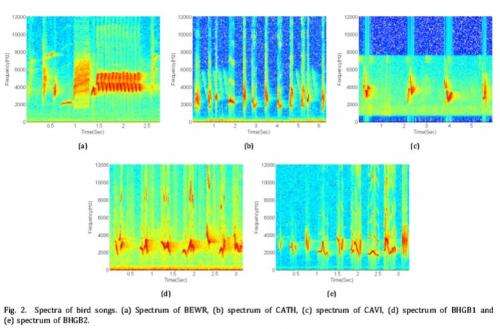Singing the same tune: Scientists develop novel ways of separating birdsong sources

Researchers at the University of California, Los Angeles and the Chinese Academy of Sciences have pioneered a new study that could greatly improve current methods of localising birdsong data. Their findings, which ascertain the validity of using statistical algorithms to detect multiple-source signals in real time and in three-dimensional space, are of especial significance to modern warfare.
Recently published in the journal Unmanned Systems, the study demonstrates the validity of using approximate maximum likelihood (AML) algorithms to determine the direction of arrival (DOA) of birdsong sources. By first recording birdsong data using omnidirectional microphones and then applying an AML algorithm to that data, researchers were able to obtain a three-dimensional DOA estimation array, which was found to yield more accurate results than conventional two-dimensional DOA estimation arrays.
Whereas two-dimensional arrays are unable to estimate the location of birds with respect to canopy height and are less effective at separating simultaneous birdsong signals, three-dimensional arrays may enable ornithologists, as well as zoologists, to identify the various sources of animal vocalisations in complicated aural environments.
With angular measurements and elevations taking less than ten seconds to be generated, this method of source separation promises to radically alter the ways that researchers of animal behaviour gather experimental data, and even the ways that nations defend themselves.
More information: Jiawei Zhang et al, Un. Sys. 02, 249 (2014). DOI: 10.1142/S2301385014400044
Provided by World Scientific Publishing


















